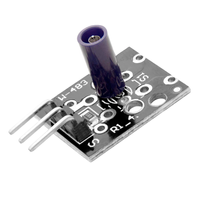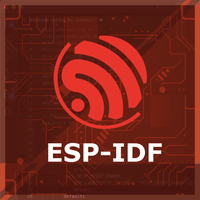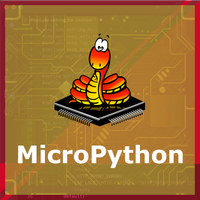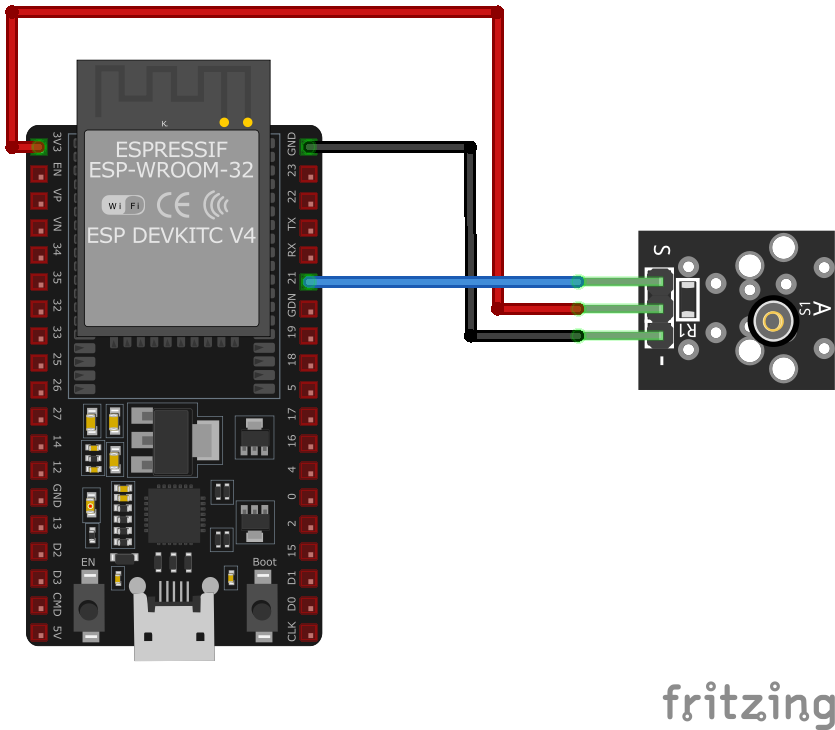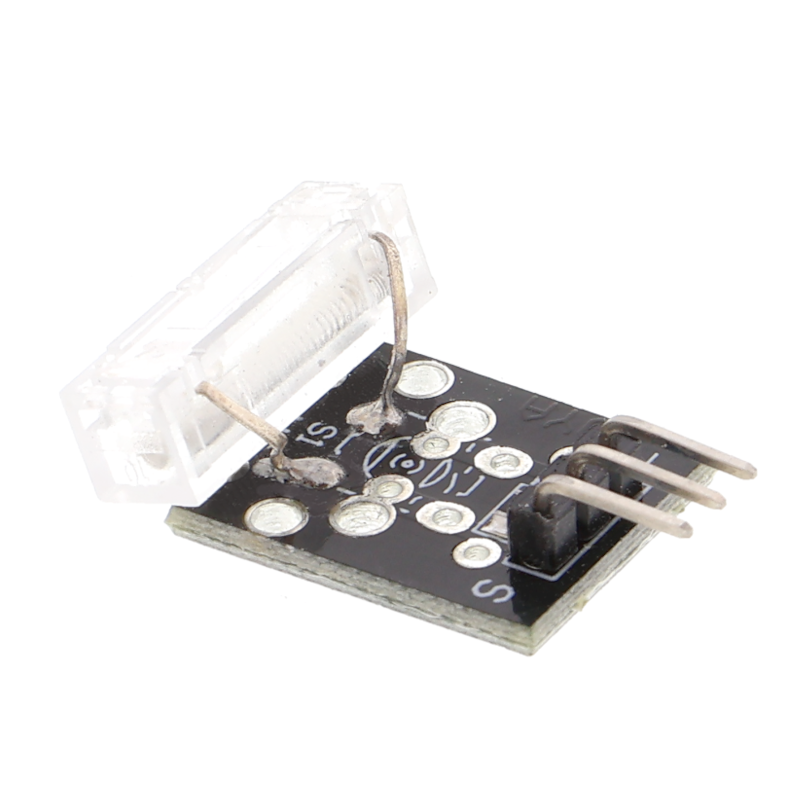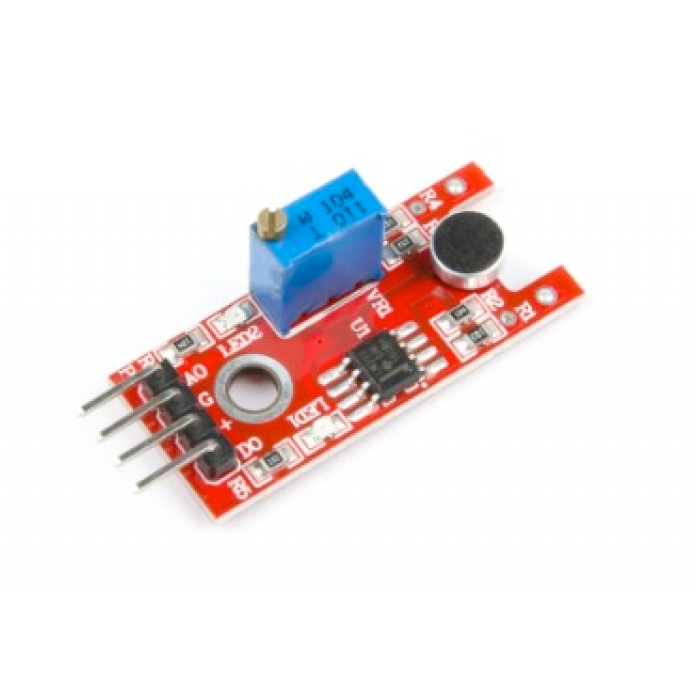ESP32 KY-002 Vibration Switch Module
Overview
The KY-002 is a vibration switch module that detects shocks and vibrations through a conductive spring mechanism. Upon movement, it sends a digital signal, making it suitable for motion detection applications in various electronic projects.
About KY-002 Vibration Switch Module
The KY-002 is a vibration switch module designed to detect shocks and movement. Using a conductive spring mechanism, it closes the circuit momentarily upon detecting vibrations, sending a digital signal to microcontrollers like ESP32 and Arduino. This makes it ideal for motion detection in security systems, interactive devices, and monitoring equipment.
⚡ Key Features
- Shock & Vibration Detection – Activates when movement or impact is detected.
- Simple Digital Output – Easily interfaces with ESP32, Arduino, and other MCUs.
- Compact & Low Power – Suitable for battery-powered projects.
- Versatile Applications – Used in security alarms, motion-sensitive devices, and monitoring systems.
With its reliable motion detection capabilities, the KY-002 is an excellent choice for interactive and security-based applications. 🚀
Where to Buy



Prices are subject to change. We earn from qualifying purchases as an Amazon Associate.
Technical Specifications
Pinout Configuration
The VCC pin is used to supply power to the sensor, and it typically requires 3.3V or 5V (refer to the datasheet for specific voltage requirements). The GND pin is the ground connection and must be connected to the ground of your ESP32.
Pin (-):Connects to Ground (GND).Pin (middle):Connects to VCC (3.3V or 5V).Pin (S):Outputs a digital signal when vibration is detected.
Troubleshooting Guide
Common Issues
❌ No Response from KY-002 Module
Issue: The module does not detect any vibrations or shocks.
Solutions:
- Verify all connections are secure and correctly placed.
- Ensure the module is receiving the appropriate voltage (3.3V or 5V).
- Check the microcontroller's GPIO pin configuration in the code.
⚠️ False Triggering of Vibration Detection
Issue: The module sends signals without any actual vibration.
Solutions:
- Reduce environmental noise or interference that might affect the sensor.
- Implement software debouncing to filter out spurious signals.
- Ensure the module is securely mounted to prevent unintended movements.
Debugging Tips
🔍 Serial Monitor
Use the Serial Monitor to check for error messages and verify the sensor's output. Add debug prints in your code to track the sensor's state.
⚡ Voltage Checks
Use a multimeter to verify voltage levels and check for continuity in your connections. Ensure the power supply is stable and within the sensor's requirements.
Additional Resources
Code Examples
Arduino Example
#define VIBRATION_PIN 10
#define LED_PIN 13
void setup() {
pinMode(VIBRATION_PIN, INPUT);
digitalWrite(VIBRATION_PIN, HIGH); // Enable internal pull-up resistor
pinMode(LED_PIN, OUTPUT);
Serial.begin(9600);
Serial.println("KY-002 Vibration detection");
}
void loop() {
int sensorValue = digitalRead(VIBRATION_PIN);
if (sensorValue == LOW) {
Serial.println("Vibration detected");
digitalWrite(LED_PIN, HIGH);
delay(100);
digitalWrite(LED_PIN, LOW);
}
delay(100);
}This Arduino code sets up the KY-002 vibration sensor on pin 10 and an LED on pin 13. When a vibration is detected, the sensor outputs a LOW signal, triggering the LED to flash and a message to be printed to the serial monitor.
ESP-IDF Example
#include <stdio.h>
#include "freertos/FreeRTOS.h"
#include "freertos/task.h"
#include "driver/gpio.h"
#define VIBRATION_PIN GPIO_NUM_4
#define LED_PIN GPIO_NUM_2
void app_main(void) {
gpio_set_direction(VIBRATION_PIN, GPIO_MODE_INPUT);
gpio_set_pull_mode(VIBRATION_PIN, GPIO_PULLUP_ONLY);
gpio_set_direction(LED_PIN, GPIO_MODE_OUTPUT);
printf("KY-002 Vibration detection\n");
while (1) {
int sensor_value = gpio_get_level(VIBRATION_PIN);
if (sensor_value == 0) {
printf("Vibration detected\n");
gpio_set_level(LED_PIN, 1);
vTaskDelay(pdMS_TO_TICKS(100));
gpio_set_level(LED_PIN, 0);
}
vTaskDelay(pdMS_TO_TICKS(100));
}
}This ESP-IDF code configures GPIO4 as an input for the KY-002 vibration sensor and GPIO2 as an output for an LED. When a vibration is detected (sensor outputs LOW), the LED flashes, and a message is printed to the console.
ESPHome Example
binary_sensor:
- platform: gpio
pin:
number: GPIO4
mode: INPUT_PULLUP
name: "KY-002 Vibration Sensor"
filters:
- delayed_on: 10ms
- delayed_off: 10ms
on_press:
- then:
- lambda: |-
ESP_LOGD("sensor", "Vibration detected!");This ESPHome configuration sets up the KY-002 vibration sensor as a binary sensor on GPIO4 with an internal pull-up resistor. It includes filters to debounce false triggers caused by short vibrations and logs when a vibration is detected.
PlatformIO Example
platformio.ini
[env:esp32]
platform = espressif32
board = esp32dev
framework = arduinoPlatformIO Example Code
#include <Arduino.h>
#define VIBRATION_PIN 4
#define LED_PIN 2
void setup() {
pinMode(VIBRATION_PIN, INPUT_PULLUP);
pinMode(LED_PIN, OUTPUT);
Serial.begin(115200);
Serial.println("KY-002 Vibration detection started");
}
void loop() {
if (digitalRead(VIBRATION_PIN) == LOW) {
Serial.println("Vibration detected");
digitalWrite(LED_PIN, HIGH);
delay(100);
digitalWrite(LED_PIN, LOW);
}
delay(100);
}This PlatformIO code configures the KY-002 vibration sensor on GPIO4 and an LED on GPIO2. When the sensor detects vibration, it outputs a LOW signal, triggering an LED blink and logging a message to the serial monitor.
MicroPython Example
import machine
import time
VIBRATION_PIN = machine.Pin(4, machine.Pin.IN, machine.Pin.PULL_UP)
LED_PIN = machine.Pin(2, machine.Pin.OUT)
while True:
if VIBRATION_PIN.value() == 0:
print("Vibration detected")
LED_PIN.on()
time.sleep(0.1)
LED_PIN.off()
time.sleep(0.1)This MicroPython script configures the KY-002 vibration sensor on GPIO4 and an LED on GPIO2. When a vibration is detected (LOW signal), the LED blinks, and a message is printed to the console.
Conclusion
The ESP32 KY-002 Vibration Switch Module is a powerful KY-0xx module sensor that offers excellent performance and reliability. With support for multiple development platforms including Arduino, ESP-IDF, ESPHome, PlatformIO, and MicroPython, it's a versatile choice for your IoT projects.
For optimal performance, ensure proper wiring and follow the recommended configuration for your chosen development platform.
Always verify power supply requirements and pin connections before powering up your project to avoid potential damage.
